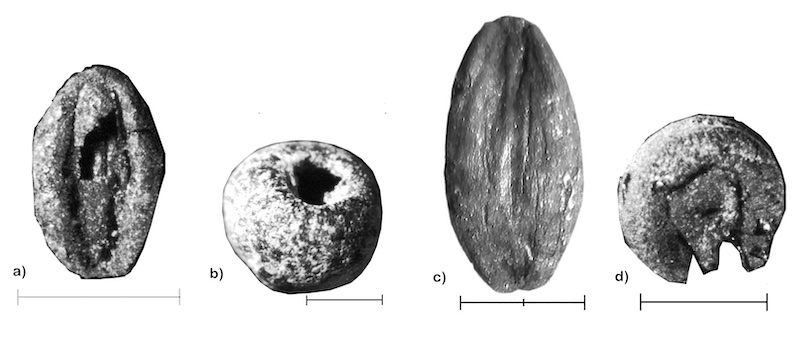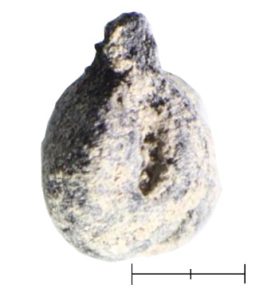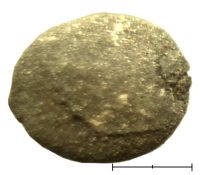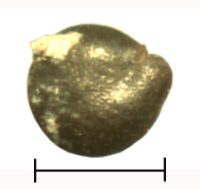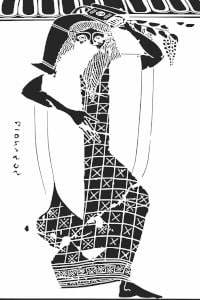
Not a Friend of ASOR yet? Sign up here to receive ANE Today in your inbox weekly!

December 2023
Vol. 11, No. 12
The Wheat From the Chaff: What We Can Learn From Studying Plants in Antiquity
By Jennifer Ramsay
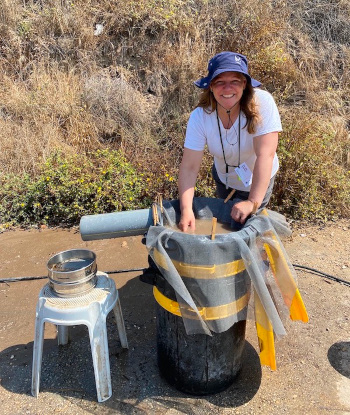
Fig. 1: The author performing flotation at Caesarea Maritima. Photo by L. Ramsay.
Plants are a fundamental part of human’s evolutionary history and undoubtedly, we would not exist without them. Plants provide us with the air we breathe, building materials, fibers for textiles, and of course the food we eat. However, unlike other types of material culture (like ceramics), it took a good deal of time for the field of Archaeobotany (or Paleoethnobotany) to develop. Much like separating the wheat from the chaff, learning how to recover often small, charred fragments of ancient plants from the surrounding sediment was a process. It was not until the 1970’s when the flotation method of recovery (fig.1) was employed that the field really came into its own.
The recovery and identification of plant remains from archaeological contexts help us to understand the ecology, environment, and natural economy of the past as well as the changes that took place in the cultural landscape due to anthropogenic or natural processes. Archaeologists have realized the importance of broad-scale botanical investigations and that the focus should not only be on cultivated crops but also on the associated weed species, as many weed species have very specific habitats and can tell us a great deal about the surrounding area (fig. 2).
As an archaeobotanist, I have been fortunate to work on a variety of projects that have recovered botanical materials providing useful information about practices of past peoples. For example, I have recovered archaeobotanical data that allowed for a better understanding of the scale and timing of local agricultural production during the Late Roman/Byzantine period (284-500 CE) at the ancient site of Bir Madhkur, which lies in Wadi Araba, in the hyper-arid (with an average rainfall of between 50-100 mm annually) hinterland of Petra, Jordan. The main features of this site (surveyed and excavated by Andrew Smith II) were a Roman/Byzantine fort, a bath complex and caravanserai, and numerous other structures like farmhouses, field systems (fig. 3), and threshing floors (fig. 4).
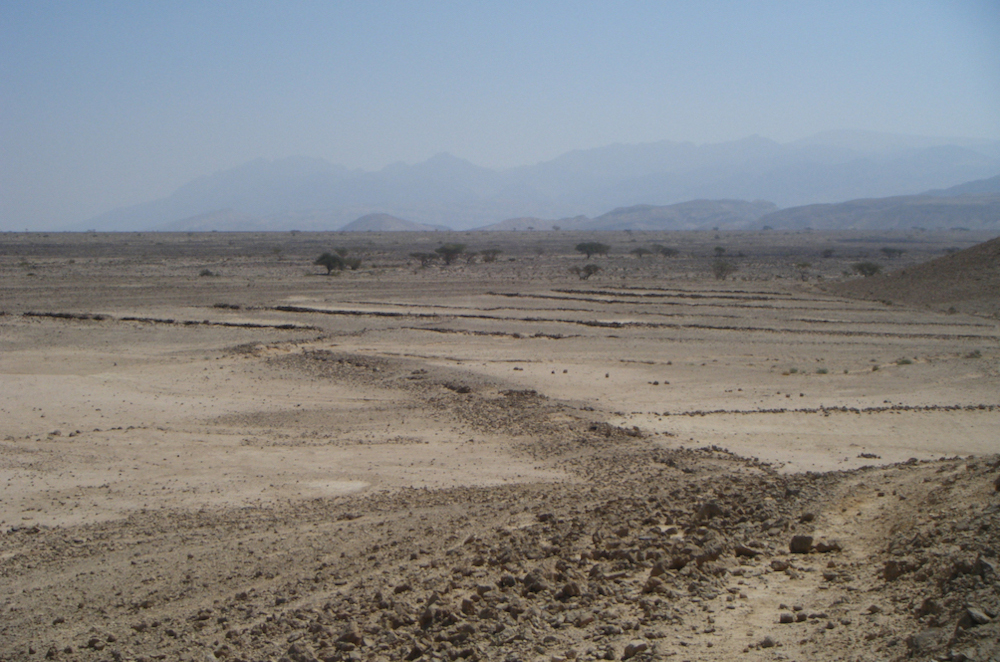
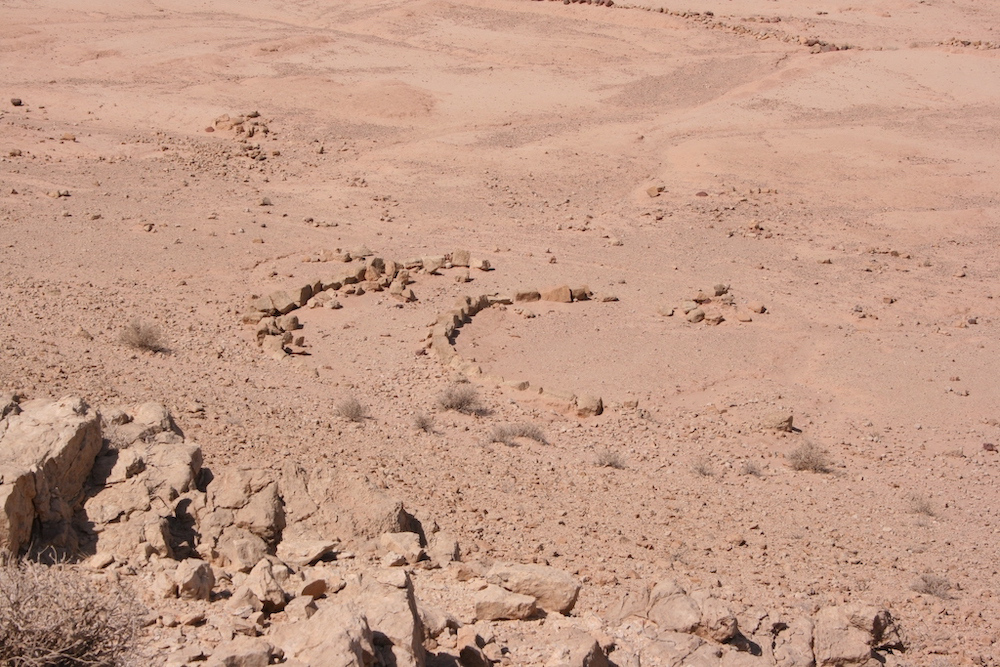
The analysis of the plant material from Bir Madhkur revealed that the Roman military presence in the 4th century CE, following an empire-wide economic collapse, played a significant role in facilitating the expansion of agricultural production throughout the region. In fact, the population increase in the Wadi Araba brought on by having such a large military presence (due to political concerns about Persia) would have necessitated the need to increase agricultural output even in such a marginal environment. This increase has been documented at several other similar sites in southern Jordan, such as Aila, Humayma and Ayn Gharandal, where the archaeobotanical remains recovered provide direct evidence for local cereal cultivation, no doubt to feed the army.
At sites like the Nabataean city of Petra, plant remains analyzed from Nabatean-period tomb deposits (excavated by Megan Perry) highlight the role plants played in Nabataean funerary contexts and contribute to a broader understanding of how plants functioned in these ritual events in the ancient world. Information derived from this study indicated the presence of a variety foodstuffs recovered from burial contexts, such as wheats, barley, lentil (fig 5a), olive (fig. 5b), grape (fig. 5c), fig, and date. These findings suggest that these foodstuffs were intentionally deposited in the majority of contexts as funerary offerings to the dead rather than as the remains of funerary dining events for the living or through accidental deposition.

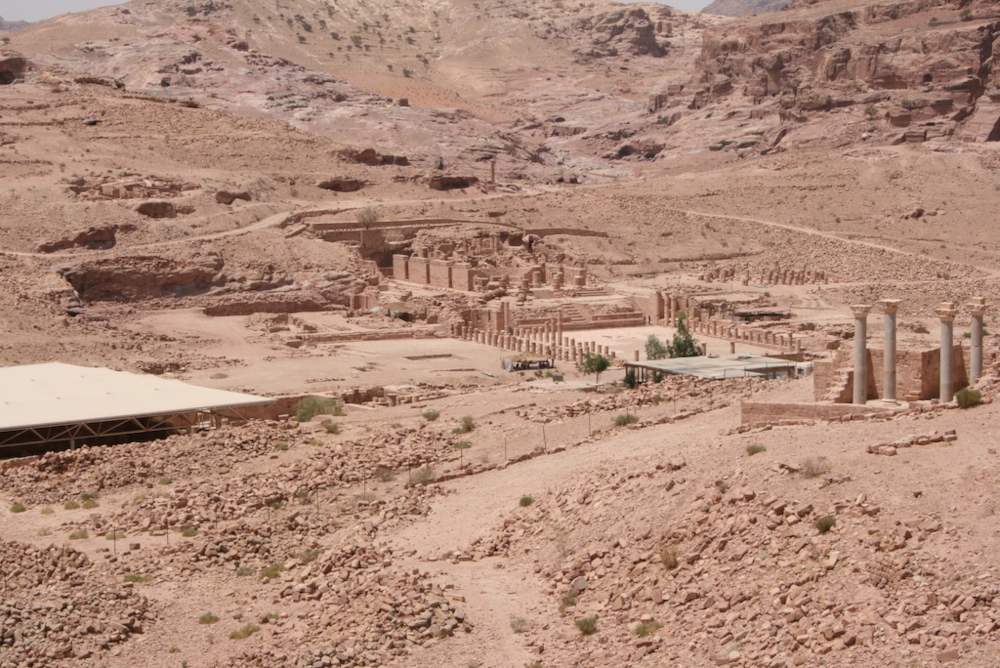
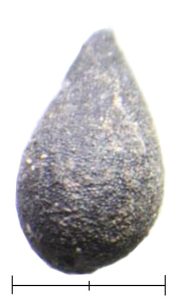
Fig. 8: Mezereon sp. (Thymelea passerina) from pigeon dung recovered from Shivta, Israel Photo by J. Ramsay.
It was hoped that the botanical data from the Petra Garden and Pool Complex project (fig. 6), directed by Leigh-Ann Bedal, could address the question of what plants were growing in the garden. However, this was not possible, as unless the garden was intentionally burned, it is unlikely that the seeds of the garden plants would have carbonized and survived in the archaeological record. While many of the species of plant identified elsewhere at the site are the types of plants — grape vines (fig. 7), and fruit and nut trees — that would be expected to be growing in a pleasure garden in the Hellenistic/Roman Near East, there was no direct archaeological evidence that these species were being cultivated on the garden terrace. Nonetheless, this work provides insight into the larger agrarian landscape through the variety of species recovered from the site and demonstrates the feasibility of identifying garden plants in antiquity by using macrobotanical remains.
Plant materials recovered from pigeon dung from the Roman and Byzantine period site of Shivta, in the Negev Desert, have provided direct evidence for pigeon diet in antiquity, which showed that the pigeons ate grapes, figs, olives, dates, as well as several weed species, like mezereon (fig. 8), canary grass and fat hen. The botanical remains recovered from the dung taken from a dovecote (fig. 9) also illustrate that the environment around Shivta, which today is mostly barren desert, was likely much more verdant in antiquity.
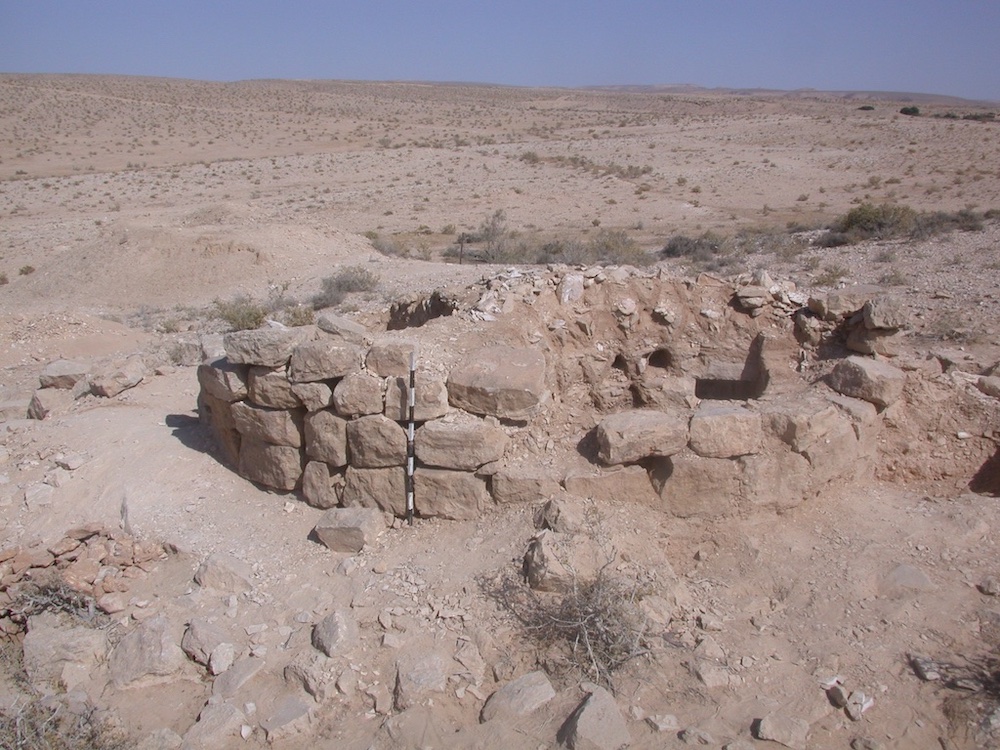
Likewise, the remains of wild species from the Neolithic sites of Wisad Pools and Wadi al-Qattafi in the Black Desert of Jordan provide evidence not only of a local desert environment but also seasonal precipitation and perhaps a more verdant past, thanks to the identification of plants typically found in more hydrophilic environments, like in moist soil, swampy areas or near riverbeds. Seasonality of the site can also be discerned by the plants, as all species identified at the Black Desert sites flower between January and June, thus pointing to an occupation of the site in the spring.
At other sites, for example the Islamic period site of Kinet Höyük in Turkey, the plant remains analyzed indicate cereal agriculture, but also document the emergence of a cotton boom, which is attested to in ethnohistorical sources but had rarely been confirmed through archaeobotanical evidence (fig. 10). Additionally, substantial quantities of Chenopodium album (also known as “fat hen”, fig. 11) in single contexts, likely representing storage, were recovered and raise questions about its role as either an agricultural weed species or a more significant contributor to the diet and health of the ancient population. This study and one examining the Islamic plant remains at Caesarea Maritima (fig. 12), add to discussions on the intersection of environmental and Islamic studies with crucial archaeological evidence, which can, for example, counter-balance and nuance certain well-worn debated ideas, such as the nature of the Islamic Green “Revolution”. A good deal has been written about Islamic agricultural innovation, claiming that these innovations were key gifts that the Islamic world bestowed upon Europe and much of the world. However, the plant data supports more recent work suggesting that there is really not that much of a difference in the pre- and post-Islamic Middle East and Mediterranean landscapes.
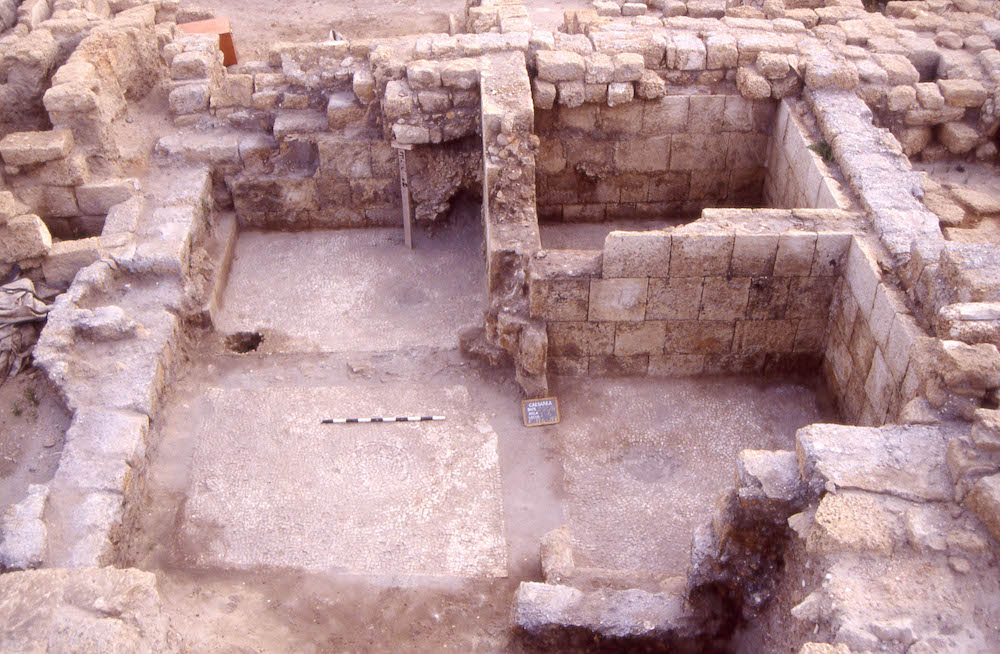
From examining Neolithic plant remains from the Black Desert in Jordan and plants from the Negev desert in Israel that indicate a much more verdant environment in the past, to discovering what plants can tell us about provisioning the Roman Army in the East through the timing and scale of agriculture, the Islamic “Green Revolution” and even to understanding the role pigeons played in ancient agriculture, plant remains offer vital evidence for our understanding of the past. The field is evolving quickly, with new applications and methodologies being used to tell us not only about subsistence, economy, culture, and the environment of past peoples but also working to integrate other forms of analysis and material culture to broaden our understanding of the past as humans and plants did not interact in seclusion.
Jennifer Ramsay is Professor in the Department of Anthropology at SUNY Brockport. You can hear Professor Ramsay talk about her work via her Friends of ASOR webinar. Click here to learn more!
Further Reading
Decker, M. 2009. Plants and Progress: Rethinking the Islamic Agricultural Revolution. Journal of World History 20 (2): 187-206.
Lodwick, L. and Rowan, E. 2022. Archaeobotanical Research in Classical Archaeology. American Journal of Archaeology 126 (4): 593-623.
Ramsay, J., Walshaw, S. and Hansen-Speer, K. 2022. Plants as Staple Foods. In A. Giesecke (ed.), A Cultural History of Plants in Antiquity (10,000 BCE to 500 CE). Volume I. Bloomsbury Publishing.
Ramsay, J. and Perry, M. 2022. Funerary dining or offerings for the dead? An archaeobotancial analysis of remains from shaft tombs in Petra, Jordan. Levant 54 (1): 50-64.
Ramsay, J. 2017. Human Population Increase and its Effects on the Arid Landscape of Southern Jordan: An Archaeobotanical Study. In W. Ward (ed.), The Socio-Economic History and Material Culture of the Roman and Byzantine East: Essays in Honour of S. Thomas Parker. Gorgias Press LLC, New Jersey, 349-382.
Ramsay, J.H., Tepper, Y., Weinstien- Evron, M., Bratenkov, S., Liphschitz, N., Marom, N. and Bar-Oz, G. 2016. For the Birds – An Environmental Archaeological Analysis of Byzantine Pigeon Towers at Shivta (Negev Desert, Israel). Journal of Archaeological Science: Reports 9: 718-727.
Ramsay, J. and Parker, S.T. 2016. A Diachronic Look at the Agricultural Economy at the Red Sea Port of Aila: An Archaeobotanical Case for Hinterland Production in Arid Environments. The Bulletin of the American Schools of Oriental Research 376: 101-120.
Ramsay, J. and Holum, K. 2015. An Archaeobotanical Analysis of the Islamic Period Occupation at Caesarea Maritima, Israel. Vegetation History and Archaeobotany 24:655–671.
Ramsay, J. and Eger, A. 2015. Analysis of Archaeobotanical Material from the Tupras Field project of the Kinet Höyük Excavations. Journal of Islamic Archaeology 2 (1): 35-50.
Ramsay, J. and Bedal, L. 2015. Garden Variety Seeds: Botanical Remains from the Petra Garden and Pool Complex. Vegetation History and Archaeobotany 24: 621-634.
Ramsay, J. and A.M. Smith II. 2013. Desert Agriculture at Bir Madhkur: The First Archaeobotanical Evidence to Support the Timing and Scale of Agriculture in the Hinterland of Petra. The Journal of Arid Environments 99: 51-63.
Ramsay, J. 2010. Trade or Trash: An Examination of the Archaeobotanical Remains from the Harbour at Caesarea Maritima, Israel. International Journal of Nautical Archaeology 39.2: 376–382.
Ramsay, J. and Y. Tepper. 2010. Signs from a Green Desert: An Analysis of Archaeobotanical Remains from Tower no. VI Near Shivta, Israel. Vegetation History and Archaeobotany 19:235–242.
Want To Learn More?
Oil, Wine, and People: A Mediterranean Triad
By Catherine E. Pratt
Oil and wine are not only Greek products, they are symbols of Greek culture and have been for thousands of years. How did this identification emerge in the Late Bronze Age and what does it suggest about the relationship between people and the products of their lands? Read More
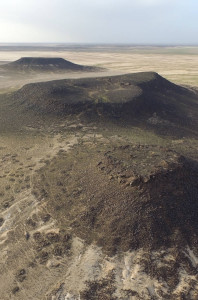 Beyond the Fertile Crescent: Life in the Black Desert
Beyond the Fertile Crescent: Life in the Black Desert
By Yorke Rowan
The forbidding landscape known as the Black Desert may be arid and inhospitable today, but recent research shows that at one time it supported both humans and large mammals. Read More
